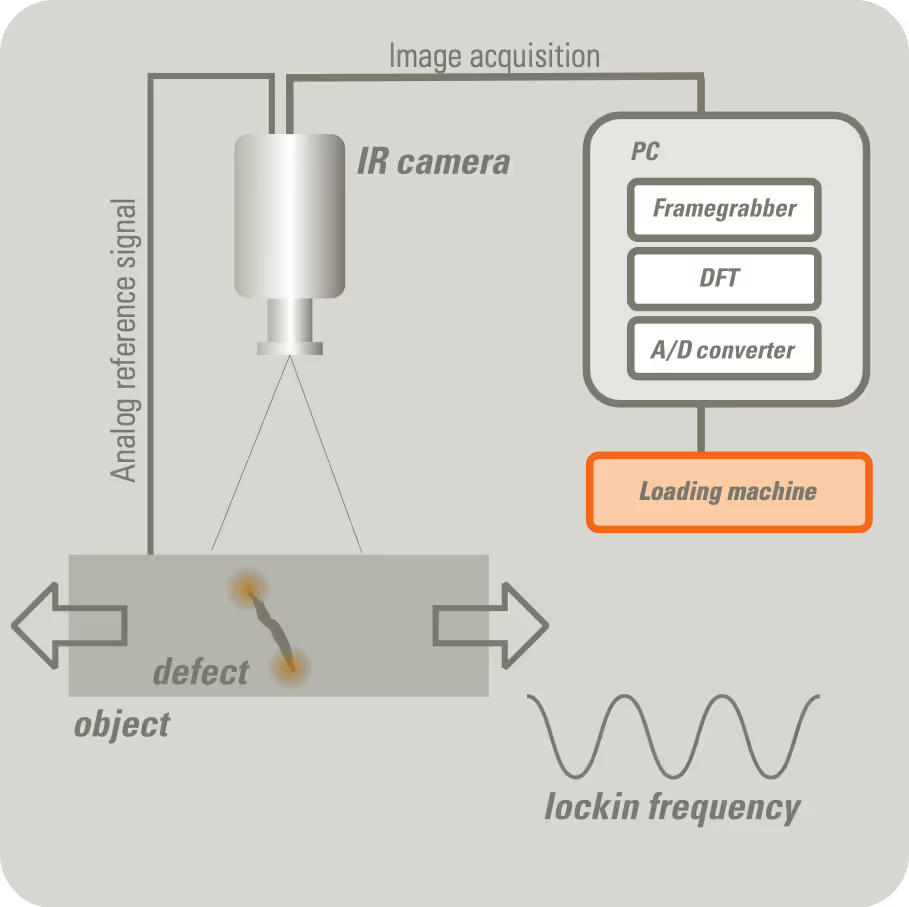Thermal stress analysis
Make mechanical tensions visible — contactless and through imaging.
Thermal stress analysis makes it possible to visualize stress distributions in components under dynamic load — non-destructively, precisely and synchronously with mechanical stress.

How it works - explained in a nutshell
Thermal stress analysis utilizes the thermoelastic effect: under cyclic mechanical loading, minimal temperature changes occur within the material. These are captured using high-resolution infrared cameras and enable real-time visualization of stress distributions and crack propagation. The method is non-contact, non-destructive, and can be precisely synchronized with mechanical test rigs.
Why Thermal Stress Analysis?
Thermal Stress Analysis (TSA) enables the visualization of stress distributions in components under dynamic loading. It is used to validate simulations, detect crack formation, and understand the failure behavior of materials.
Typical Applications:
- Detection of residual stresses after manufacturing processes (e.g., welding, forming)
- Investigation of components under load
- Validation of FEM simulation
- Quality control of materials with anisotropic behavior
- Research & development of new materials or composites
Thermographic Solution
Using lock-in thermography, these changes are precisely detected and visualized. Under cyclic loading of a component, elastic deformations lead to minimal temperature changes (thermoelastic effect). These are captured by a synchronized infrared camera. The resulting data enables the visualization of stress distributions and the identification of crack formation or material fatigue.
Software Solution for Thermal Stress Analysis
Unsure whether thermal stress analysis can help?
In a brief initial consultation, we clarify how thermography can effectively support you – clear, transparent, and without obligation.
FAQ
Our frequently asked questions — answered quickly and easily.
For which materials is thermography suitable?
It is particularly suitable for metallic components.
find out moreHow is synchronization with mechanical test stands implemented?
The infrared camera is synchronised exactly with the test stand in time to precisely capture the temperature changes during the load cycle.
find out moreHow sensitive is TSA to temperature changes?
TSA can detect temperature changes in the microkelvin range, which enables high sensitivity to minimal stress changes.
find out moreIs the method suitable for inline integration into production processes?
TSA is mainly used in laboratory environments and for research purposes. Inline integration is possible but requires specific adjustments.
find out moreWhich materials can be investigated using TSA?
TSA is suitable for metallic materials, plastics and fibre-reinforced materials that are to be examined under cyclic loading.
find out more


